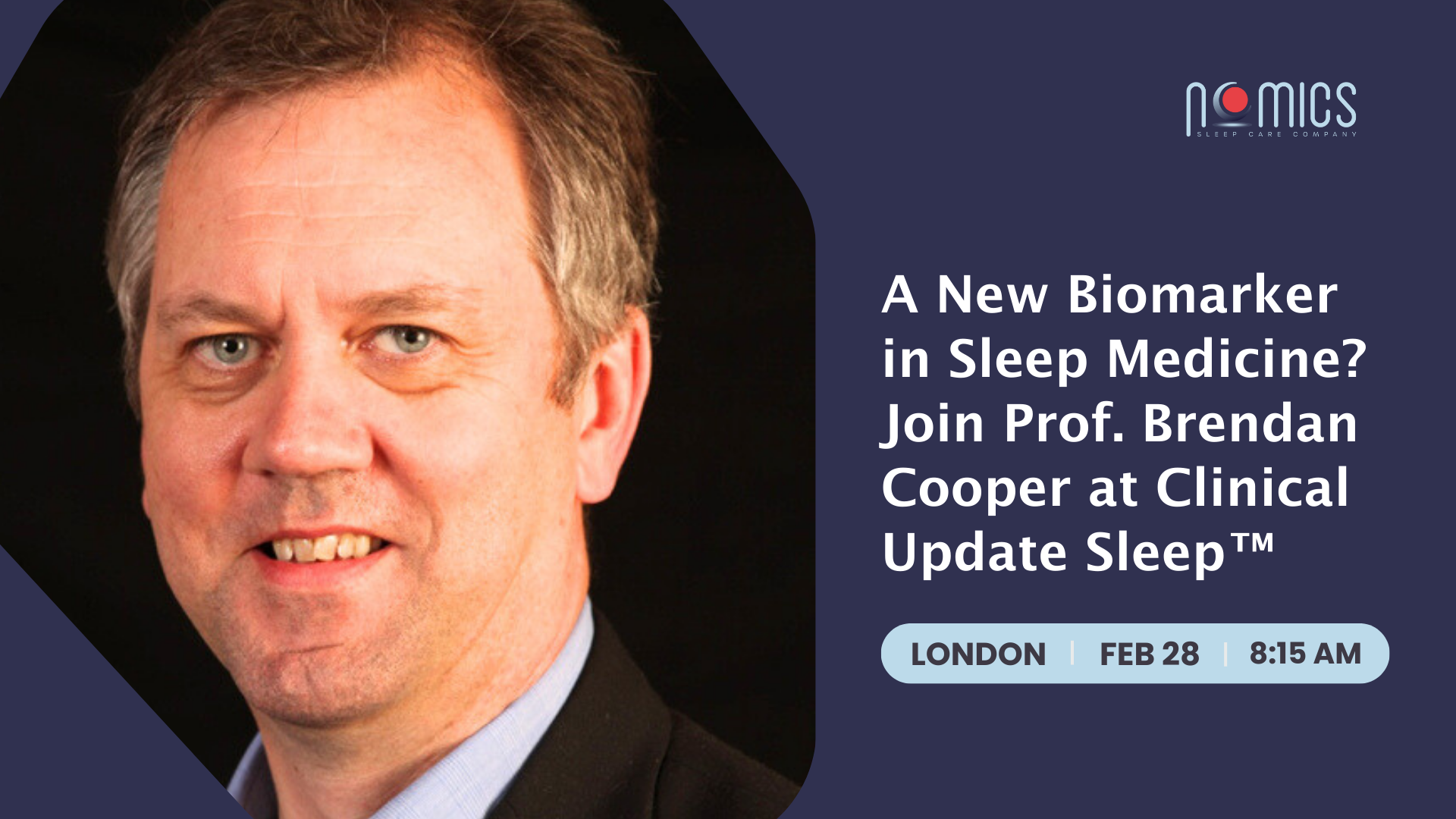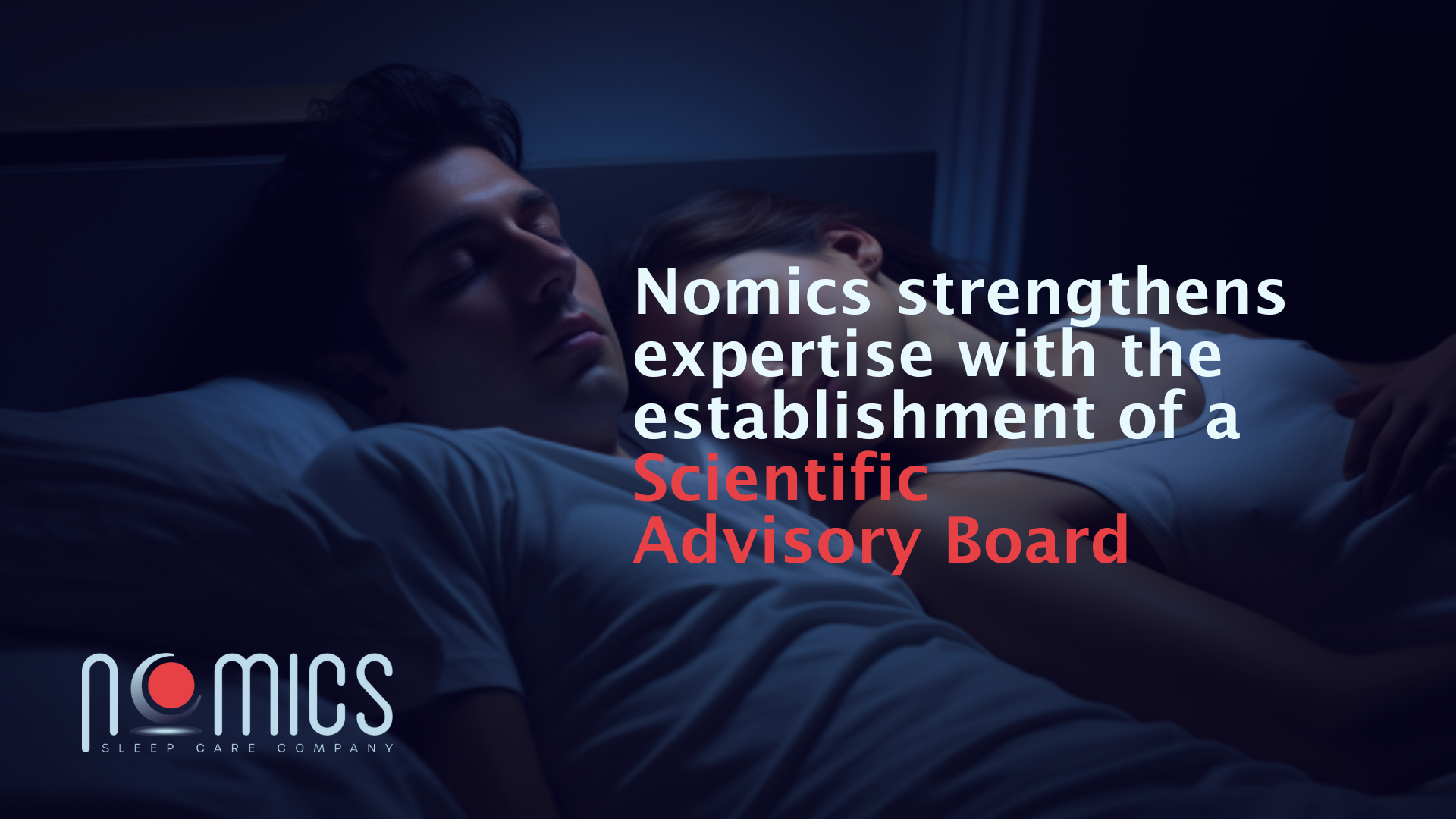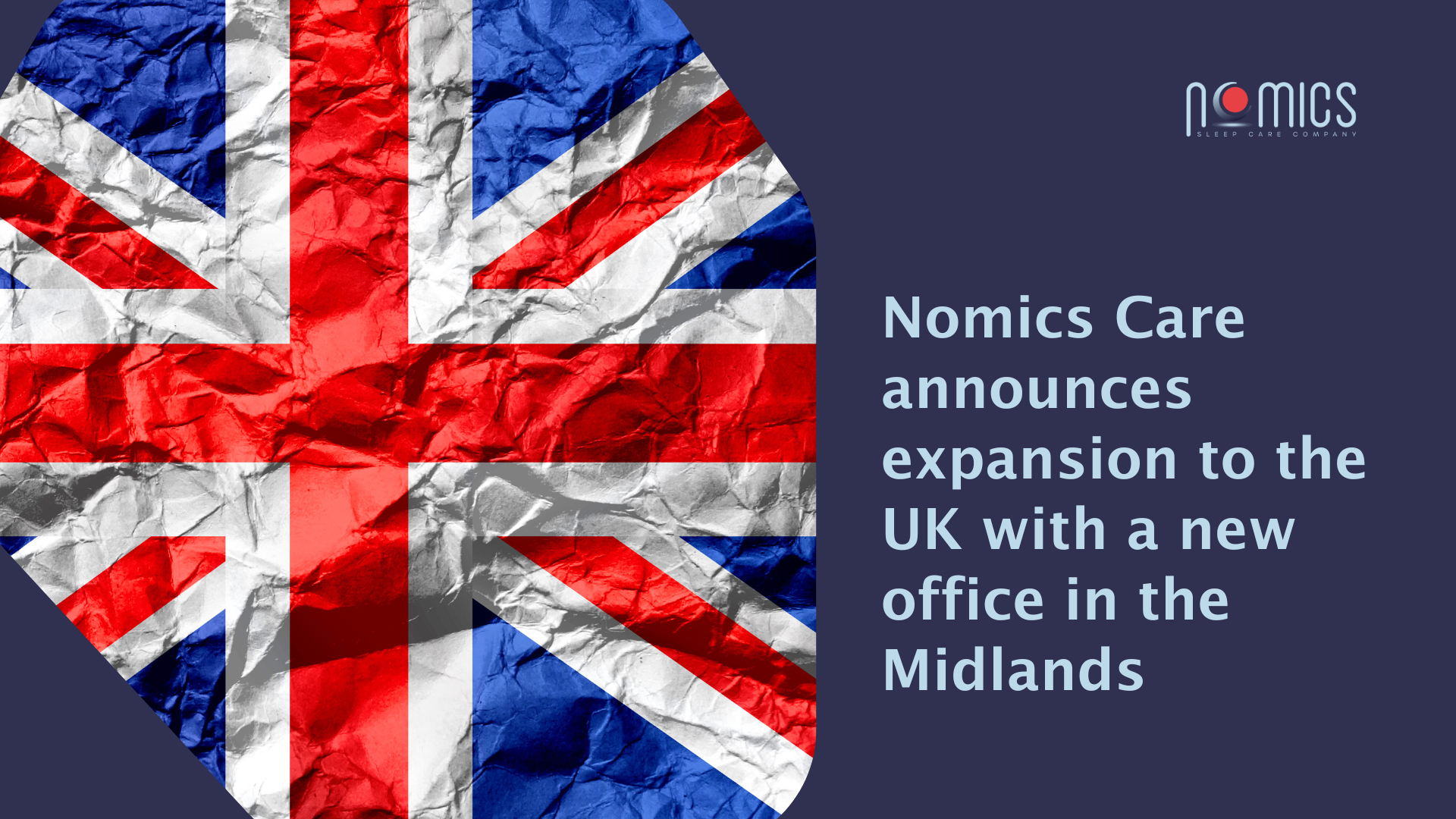A bite of the future – A new biomarker in sleep medicine?
Despite advancements in sleep medicine, many sleep disorders remain underdiagnosed due to the limitations of traditional respiratory polygra…
“Doctor, I am still tired!”
Residual sleepiness and tiredness under C-PAP and other therapies for Obstructive Sleep Apnea is a thorn in many sleep specialists’ sides. Yet, those symptoms are only the tip of the iceberg of therapeutic effectiveness. Indeed, finding the right treatment for each patient is complex, and the literature is often of little help.
- Why is my patient still tired with a normalised AHI?
- Which patient would benefit from an oro-nasal mask?
- Where do the leaks in this CPAP come from?
- How can I tell if the adenotonsillectomy has been effective?
- How should I decide between closing the mouth or not in oral appliance therapy?
Therapy effectiveness matters
We treat patients, not AHI
Residual sleepiness is far from uncommon in patients supposedly correctly treated by CPAP. Yet, excessive daytime sleepiness is a severe problem for patients’ quality of life. A normalised AHI does not tell the whole story. After all, a successful therapy should focus on reducing patients’ symptoms over reducing their AHI.
Making the most of the C-PAP
Whether a treatment is paid for by the patient, a social welfare system, or a private insurer, there is an incentive to justify the cost of that treatment. Improving the effectiveness of the current therapy is more efficient than changing to another type of therapy when results are insufficient.
Knowing when to move to a second-line
CPAP and oral appliances are first-line treatments for sleep-related breathing disorders. Before moving on to second-line treatment, we should ensure that the first treatment was used optimally. If not, we should try to improve the first-line treatment before moving on to another line.
For instance, the German ENT society recently issued guidelines on hypoglossal nerve stimulation that calls for an objective measurement of CPAP therapy before; moving on to hypoglossal nerve stimulation. Again, the idea is to ensure the optimal use of first-line treatment before ruling them out as ineffective.
The C-PAP and its issues
Judge, jury and executioner
The reasons behind residual sleepiness are poorly understood. A possible explanation comes from the way we measure CPAP effectiveness. Typically, CPAPs monitor themselves by providing their own AHI data. Therefore, if the CPAP measurements are flawed, the patient can wrongly appear as correctly treated. Moreover, in 2013, the American Thoracic Society flagged another issue with CPAP adherence tracking systems: “residual events (apnea/hypopnea) and leak data are not as easy to interpret as CPAP usage, and the definitions of these parameters differ among CPAP manufacturers”.
Oral breathing: C-PAP’s nightmare
The C-PAP might be the first-line treatment of obstructive sleep apnea, but it is far from perfect. Correctly setting a C-PAP is not easy. Manufacturers have made some progress, such as a simplified titration process with the A-PAP (i.e. automatic C-PAP). However, many physicians still struggle to identify the leaks' origin or determine the right mask for their patients. Most physical agree that oral breathing is a frequent cause of leaks and a reason to use an oronasal mask. Yet, they lack the tool to identify oral breathing.
Why the JAWAC is the solution
Brizzy+ is a breeze
Ambulatory, cheap, incredibly easy to use… Yet accurate and exhaustive. Really, Brizzy+ is the best tool for assessing the treatment’s effectiveness.
An objective measure of your patients' nights
Most practicians use the C-PAP-generated AHI and recordings to evaluate CPAP effectiveness. However, the C-PAP AHI is an approximation and can lead to improper evaluation of the CPAP therapy, particularly when the patient has residual symptoms. The Brizzy is an easy, inexpensive and accurate way to measure the AHI without the fuss of PSG or heavy polygraphy.
Know about oral breathing
Oral breathing is an essential factor to know when managing the treatment of a patient with obstructive sleep apnea. Indeed, oral breathing is a potential cause of C-PAP leaks and a critical consideration when deciding the type of OAT to use in
Understand and acts on leaks
Briny+ is unique in its strength to assess C-PAP leaks. In a 2020 study published in Chest, Lebret et al. used the Brizzy+ with a pneumotachograph to successfully determine the cause of leaks in a patient treated with C-PAP.
Works with more than CPAPs!
While this post focused mainly on C-PAP, the Brizzy can be helpful with other treatments: oral appliance therapy, myofunctional therapy, ENT/oral surgery… For example, a 2018 study showed that the JAWAC sensor can accurately assess oral appliances' effectiveness.
With Brizzy+, you and your patient can sleep like logs knowing that their treatment is the best it can be. To learn more about the use of Brizzy+ in treatment effectiveness (See our product page : Brizzy+)
Bibliography:
• Nomics
Maury G, Cambron L, Jamart J, Marchand E, Senny F, Poirrier R. Added value of a mandible movement automated analysis in the screening of obstructive sleep apnea. Journal of Sleep Research. 2013 Feb;22(1):96–103.
Martinot JB, Senny F, Denison S, Cuthbert V, Gueulette E, Guénard H, et al. Mandibular Movements Identify Respiratory Effort in Pediatric Obstructive Sleep Apnea. Journal of Clinical Sleep Medicine. 2015 May 15;11(05):567–74.
Martinot JB, Borel JC, Cuthbert V, Guénard HJP, Denison S, Silkoff PE, et al. Mandibular position and movements: Suitability for diagnosis of sleep apnoea. Respirology. 2017 Apr 1;22(3):567–74.
Chakar B, Senny F, Poirrier AL, Cambron L, Fanielle J, Poirrier R. Validation of midsagittal jaw movements to measure sleep in healthy adults by comparison with actigraphy and polysomnography. Sleep Science. 2017;10(3):122–7.
Senny F, Maury G, Cambron L, Leroux A, Destiné J, Poirrier R. Mandible Behavior in Obstructive Sleep Apnea Patients Under CPAP Treatment. Vol. 5, The Open Sleep Journal. 2012.
Lebret M, Arnol N, Contal O, Martinot JB, Tamisier R, Pepin JL, et al. Nasal obstruction and male gender contribute to the persistence of mouth opening during sleep in CPAP-treated obstructive sleep apnoea. Respirology. 2015 Oct 1;20(7):1123–30.
Martinot JB, Le-Dong NN, Crespeigne E, Silkoff PE, Cuthbert V, Denison S, et al. Mandibular Movement Analysis to Assess Efficacy of Oral Appliance Therapy in OSA. Chest. 2018 Dec 1;154(6):1340–7.
Lebret M, Arnol N, Martinot JB, Lambert L, Tamisier R, Pepin JL, et al. Determinants of Unintentional Leaks During CPAP Treatment in OSA. Chest. 2018 Apr 1;153(4):834–42.
• German ENT Society Guidelines
Steffen A, Heiser C, Galetke W, Herkenrath SD, Maurer JT, Günther E, et al. Hypoglossal nerve stimulation for obstructive sleep apnea: updated position paper of the German Society of Oto-Rhino-Laryngology, Head and Neck Surgery. European Archives of Oto-Rhino-Laryngology. 2022 Jan;279(1):61–6.
• Further Readings
Rotenberg BW, Murariu D, Pang KP. Trends in CPAP adherence over twenty years of data collection: a flattened curve. J Otolaryngol Head Neck Surg. 2016 Aug 19 ;45(1):43.
Gabryelska A, Sochal M, Wasik B, Szczepanowski P, Białasiewicz P. Factors Affecting Long-Term Compliance of CPAP Treatment—A Single Centre Experience. Journal of Clinical Medicine. 2022 Jan 1;11(1):139.
Lin HS, Prasad AS, Pan CJG, Rowley JA. Factors Associated With Noncompliance to Treatment With Positive Airway Pressure. Archives of Otolaryngology–Head & Neck Surgery. 2007 Jan 1 [cited 2022 Jul 8];133(1):69–72
Nsair A, Hupin D, Chomette S, Barthélémy JC, Roche F. Factors Influencing Adherence to Auto-CPAP: An Observational Monocentric Study Comparing Patients With and Without Cardiovascular Diseases. Frontiers in Neurology. 2019 Aug 2
Koutsourelakis I, Perraki E, Economou NT, Dimitrokalli P, Vagiakis E, Roussos C, et al. Predictors of residual sleepiness in adequately treated obstructive sleep apnoea patients. European Respiratory Journal. 2009 Sep 1;34(3):687–93.
Valentin A, Subramanian S, Quan SF, Berry RB, Parthasarathy S. Air Leak is Associated with Poor Adherence to Autopap Therapy. Sleep [Internet]. 2011 Jun 1; 34(6):801.
Meshkat M, Ebner J, Burghuber O, Valipour A. Treatment adherence with CPAP for obstructive sleep apnea is influenced by mask leak. European Respiratory Journal. 2011;38(Suppl 55).
Olsen S, Smith S, Oei T, Douglas J. Health belief model predicts adherence to CPAP before experience with CPAP. European Respiratory Journal. 2008 Sep 1 ;32(3):710–7.
Park P, Kim J, Song YJ, Lim JH, Cho SW, Won T bin, et al. Influencing factors on CPAP adherence and anatomic characteristics of upper airway in OSA subjects. Medicine. 2017 Dec 1; 96(51).
Vanderveken OM, Dieltjens M, Wouters K, de Backer WA, van de Heyning PH, Braem MJ. Objective measurement of compliance during oral appliance therapy for sleep- disordered breathing. Thorax. 2013 Jan 1;68(1):91–6.
Pahkala R, Seppä J, Myllykangas R, Tervaniemi J, Vartiainen VM, Suominen AL, et al. The impact of oral appliance therapy with moderate mandibular advancement on obstructive sleep apnea and upper airway volume. Sleep Breath. 2020 ;24(3):865–73.
Norrhem N, Marklund M. An oral appliance with or without elastic bands to control mouth opening during sleep—a randomised pilot study. Sleep and Breathing 2016 20:3 . 2016 Jan 25 ;20(3):929–38.
Pepin JL, Raymond N, Lacaze O, Aisenberg N, Forcioli J, Bonte E, et al. Heat-moulded versus custom-made mandibular advancement devices for obstructive sleep apnoea: A randomised non-inferiority trial. Thorax. 2019 Jul 1;74(7):667–74.
Schwab RJ, Badr SM, Epstein LJ, Gay PC, Gozal D, Kohler M, et al. An Official American Thoracic Society Statement: Continuous Positive Airway Pressure Adherence Tracking Systems. The Optimal Monitoring Strategies and Outcome Measures in Adults. https://doi.org/101164/rccm201307-1282ST. 2013 Aug 31;188(5):613–20.
These articles might interest you

Despite advancements in sleep medicine, many sleep disorders remain underdiagnosed due to the limitations of traditional respiratory polygra…

Nomics is proud to announce the formation of its multidisciplinary Scientific Advisory Board, comprising distinguished professors and doctor…

Today, Nomics Care, a Belgian MedTech company, announced the expansion of its operations into the Midlands, UK.